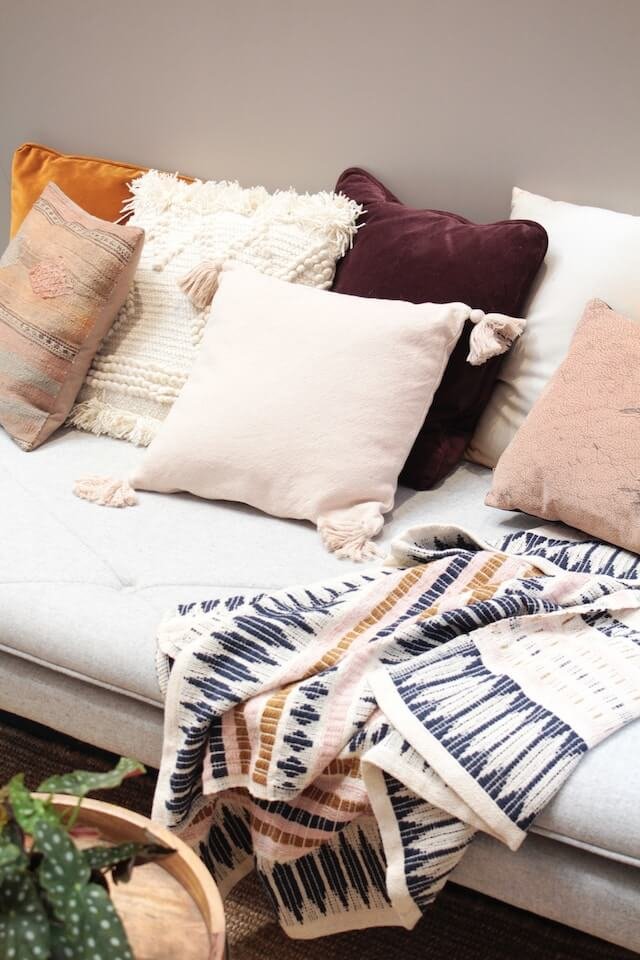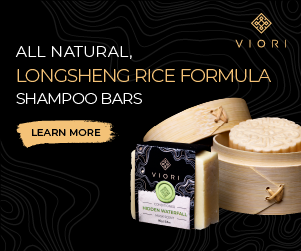Exploring the realm of boho décor and design is akin to embarking on a boundless journey, where the term “Boho” itself unveils a plethora of possibilities devoid of rigid constraints. For those enamored with the boho style yet uncertain of where to commence, here is a guiding light. The beauty of boho lies in its subtle yet distinctive elements, offering a canvas as expansive as one’s imagination. Whether it is weaving in eclectic patterns, layering textures, or embracing vibrant hues, the essence of boho allows for individual interpretation and personal expression, making it a delightfully liberating style to embrace.
BOHO DECORATING
Boho decorating, derived from the term “bohemian decorating,” encompasses an interior design style characterized by its eclectic, free-spirited vibe, drawing inspiration from diverse cultural sources. Rooted in the unconventional lifestyle of artists, writers, and wanderers during the late 19th century, this aesthetic has organically evolved over time, reflecting a fusion of artistic expression and cultural influences.
Boho decor is characterized by a mix of colors, patterns, and textures, creating a vibrant and relaxed atmosphere.
Here are some key elements commonly found in boho decorating:
Colors: Boho decor often features rich, earthy tones like deep reds, warm oranges, vibrant purples, and jewel tones. It also incorporates pops of brighter colors such as turquoise, fuchsia, or mustard yellow.
Patterns: Mixing and layering patterns is a signature of boho style. You will find various patterns like geometric prints, tribal motifs, paisley, ikat, and floral designs. The key is to blend different patterns harmoniously.
Natural Materials: Bohemian decor emphasizes natural elements, such as wood, rattan, bamboo, jute, and sisal. These materials add warmth and texture to the space.
Global and Vintage Finds: Boho style celebrates cultural diversity and often incorporates global influences. It is common to see furniture, textiles, and accessories from various parts of the world, such as Moroccan rugs, Indian tapestries, or Turkish lanterns. Vintage or thrifted pieces also add character to the overall boho look.
Layered Textiles: Bohemian interiors are known for their abundant use of textiles. Layering rugs, throws, pillows, and curtains in various textures and patterns can create a cozy and inviting atmosphere.
Plants: Indoor plants play a significant role in boho decor. Adding lush greenery, such as ferns and succulent bring hanging plants, brings life and freshness to the space.
Eclectic Furniture: Mixing different furniture styles is a characteristic of boho decorating. Combining vintage pieces with modern or ethnic furniture creates a unique and personalized look.
Artistic Touches: Bohemian interiors often highlight art, whether it is paintings, tapestries, or sculptures. Handmade or DIY artwork is also commonly incorporated.
The essence of boho decorating lies in creating a relaxed and inviting space that reflects the owner’s individuality and embraces a sense of freedom and self-expression. The style encourages a laid-back, casual atmosphere where various elements from diverse cultures can coexist harmoniously.
TYPES OF BOHO DECORATING
While boho decorating encompasses a broad range of styles and influences, there are a few distinct subtypes or variations within the bohemian aesthetic. Here are some of the several types of boho decorating:
Modern Boho: This style combines the bohemian spirit with clean lines and contemporary elements. It often features a neutral color palette with pops of vibrant colors, minimalist furniture, and a focus on natural materials. Modern boho tends to have a more streamlined and polished look.
Moroccan Boho: Inspired by the rich and colorful Moroccan culture, this variation of boho decorating incorporates elements such as Moroccan rugs, lanterns, and intricate tile work. It often highlights vibrant hues, ornate patterns, and luxurious textiles like silk or velvet.
Scandinavian Boho: Blending the bohemian and Scandinavian design philosophies, this style combines the cozy and minimalistic approach of Scandinavian interiors with boho elements. It typically features a neutral color palette, natural materials, and a mix of modern and vintage furniture. It aims for a more pared-down and serene boho look.
Coastal Boho: This variation combines the laid-back, beachy vibes of coastal decor with bohemian elements. It often features a light and airy color palette inspired by the ocean and beach, natural textures like rattan or seagrass, and nautical-inspired accents. Coastal boho creates a relaxed and breezy atmosphere.
Vintage Boho: This style embraces the charm of vintage and retro pieces, combining them with bohemian elements. It often features antique furniture, retro patterns, and a mix of thrifted or upcycled items. Vintage boho celebrates nostalgia and individuality.
Global Boho: This variation emphasizes the multicultural aspect of bohemian decor. It draws inspiration from different countries and cultures, incorporating textiles, patterns, and artifacts from around the world. Global boho celebrates diversity and creates a well-traveled and eclectic atmosphere.
It is important to note that these are not rigid categories, and many boho spaces incorporate elements from multiple variations or have their unique blend of styles. The beauty of boho decorating lies in its versatility and the ability to personalize and adapt it to individual preferences and tastes.
DIFFERENCE BETWEEN BOHO AND BOHEMIAN DÉCOR
Boho and bohemian decor are the same style, with “boho” being a shortened term for “bohemian.” Both terms refer to the same design aesthetic that is inspired by the bohemian lifestyle and culture. However, the term “boho” has become more commonly used in recent years to describe this style.
In terms of the design itself, boho or bohemian decor is characterized by its eclectic and free-spirited nature, drawing influences from various cultures and eras. It embraces a mix of colors, patterns, textures, and global elements. It often incorporates vintage or thrifted pieces, natural materials, and a layered and relaxed approach to styling.
The term “boho” or “bohemian” is often used to describe not only interior design but also fashion, lifestyle, and artistic expression. It reflects a nonconformist and artistic attitude, celebrating individuality, creativity, and a carefree, laid-back approach to life.
While “boho” and “bohemian” are interchangeable terms when it comes to design, “boho” has become the more commonly used and recognized term in recent years to describe this style.
BOHO AND THE BEATNIK AND HIPPIE ERA
Boho decorating has strong connections to both the beatnik and hippie eras. The bohemian lifestyle and aesthetic that inspire boho decor emerged during the late 19th century and gained popularity in the mid-20th century, particularly during the beatnik and hippie movements.
The beatniks, who were prominent in the 1950s and early 1960s, rejected mainstream societal norms and embraced a bohemian lifestyle. They sought creative expression, valued individuality, and often lived in unconventional spaces that reflected their free-spirited ideals. Their influence can be seen in the artistic and nonconformist elements of boho decor.
The hippie movement, which reached its peak in the 1960s and early 1970s, also embraced bohemian values and aesthetics. Hippies rejected materialism and consumer culture, promoted peace and love, and celebrated personal freedom and self-expression. Their countercultural lifestyle was often reflected in their living spaces, which were filled with vibrant colors, natural materials, psychedelic patterns, and an eclectic mix of furnishings. These elements are also prominent in boho decorating.
Both the beatnik and hippie eras contributed to shaping the bohemian lifestyle, which in turn influenced the development of boho decor. The spirit of nonconformity, artistic expression, and a relaxed, free-spirited attitude that characterized these movements is deeply ingrained in the boho aesthetic.
HOW TO GET IDEAS FOR BOHO DECORATING
There are several great sources where you can find inspiration and ideas for boho decorating. Here are some of the best places to explore:
Online Platforms and Websites: Online platforms offer a wealth of inspiration for boho decorating. Websites like Pinterest, Instagram, and interior design blogs have a vast array of boho-inspired images, mood boards, and curated collections. You can search for specific boho decor ideas, follow relevant hashtags, and discover the work of designers and influencers specializing in boho style.
Interior Design Magazines: Magazines focused on interior design, home decor, and lifestyle often feature articles, photoshoots, and design tips on various decorating styles, including boho. Some popular magazines with boho-inspired content include Elle Decor, House Beautiful, and Boho Style Magazine.
Bohemian Markets and Festivals: Local bohemian markets, craft fairs, and festivals can be a treasure trove of inspiration for boho decorating. These events often highlight unique handmade items, textiles, artwork, and furniture that align with the boho aesthetic. You can explore different vendors, talk to artisans, and discover one-of-a-kind pieces that reflect the boho style.
Antique Shops and Thrift Stores: Antique shops and thrift stores are excellent places to find vintage or retro items that can add character and boho flair to your space. Look for unique furniture, eclectic decor pieces, and vintage textiles like rugs or tapestries. Do not be afraid to mix and match styles to create your personalized boho look.
Travel and Cultural Experiences: Traveling to different countries and immersing yourself in diverse cultures can be a rich source of inspiration for boho decorating. Explore local markets, visit artisan workshops, and observe traditional crafts and textiles. Pay attention to the colors, patterns, and materials used in different regions. You can incorporate these influences into your boho decor.
Nature and Outdoor Spaces: Nature is a significant element in boho decorating. Take walks in nature, visit botanical gardens, or spend time in outdoor spaces. Observe the colors, textures, and natural materials. Bring elements of nature indoors by incorporating plants, natural fibers, and organic textures into your boho decor.
The most important thing to remember about boho decorating is its emphasis on freedom of expression and individuality. Unlike other design styles with strict rules, boho decorating encourages mixing and matching diverse elements, textures, colors, and patterns to create a personalized and eclectic space that reflects your unique personality and tastes. The key is to embrace creativity, spontaneity, and a sense of adventure while incorporating pieces that resonate with you on a deeper level, fostering a space that feels vibrant, inviting, and authentically you.
Remember, while seeking inspiration, it is essential to infuse your personal style and preferences into your boho decorating. Adapt the ideas you find to suit your space, budget, and individual taste. This is what it is all about!
If you liked this Share It!
Unleash your BOHOtude – visit BOHOtude Apparel for a selection of free-spirited apparel.



















